11 Manor House Street, Pudsey, Leeds, West Yorkshire, LS28 7BJ
For centuries, Pudsey depended on farming and sheep-rearing. Fleeces were woven by villagers in their cottages moving shuttles across hand-looms. The trade greatly expanded with the advent of large mills. Two pairs of crossed shuttles were featured on the arms of the Borough of Pudsey for more than 70 years, until the borough became part of Leeds in 1974.
A sculpture and text about The Crossed Shuttle.
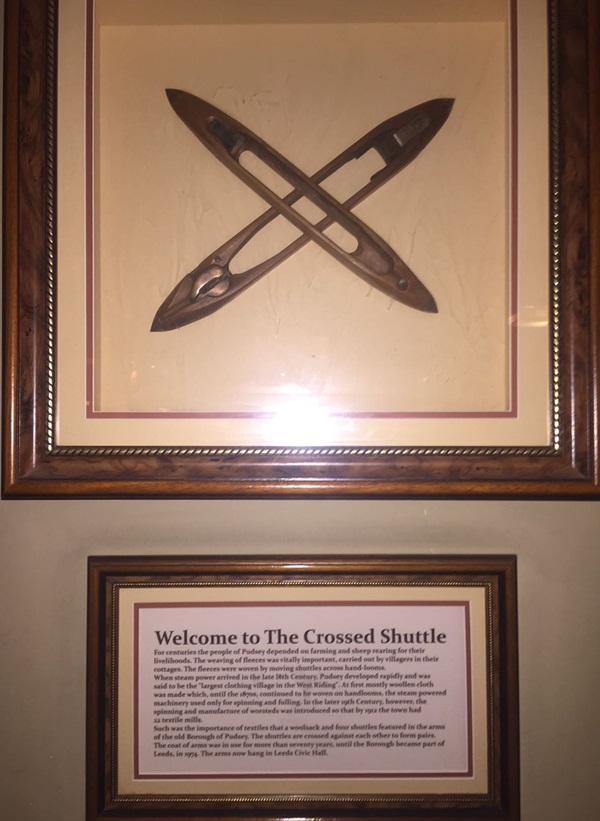
The text reads: For centuries the people of Pudsey depended on farming and sheep rearing for their livelihoods. The weaving of fleeces was vitally important, carried out by villagers in their cottages. The fleeces were woven by moving shuttles across hand-looms.
When steam power arrived in the late 18th century, Pudsey developed rapidly and was said to be the “largest clothing village in the West Riding”. At first mostly woollen cloth was made which, until the 1870s, continued to be woven on handlooms, the steam powered machinery used only for spinning and fulling. In the later 19th century, however, the spinning and manufacturer of worsteds was introduced so that by 1912 the town had 22 textile mills.
Such was the importance of textiles that a woolsack and four shuttles featured in the arms of the old Borough of Pudsey. The shuttles are crossed against each other to form pairs. The coat of arms was in use for more than seventy years, until the Borough became part of Leeds, in 1974. The arms now hang in Leeds Civic Hall.
Prints and text about James Montgomery and Richard Oastler.
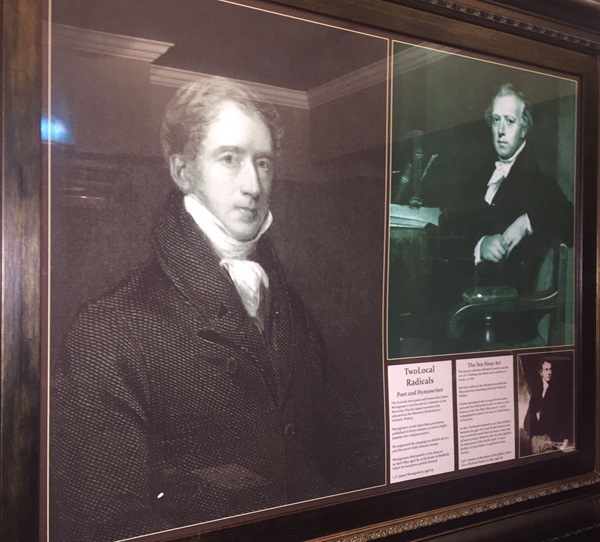
The text reads: The Scottish-born poet and hymn writer James Montgomery was the son of a minister in the Moravian Church. James was sent to be educated at the Moravian Settlement at Fulneck, Pudsey.
Montgomery wrote more than 400 hymns, published in three volumes, as well as highly popular non-religious poetry. He supported the campaign to abolish slavery and the use of child chimney sweeps. Montgomery died quietly in his sleep on 30 April 1854, aged 83, at his home in Sheffield, where he was given a public funeral.
Left: James Montgomery, aged 55
The factory reformer Richard Oastler was the son of a clothing merchant and was born in Leeds, in 1789. Between 1798 and 1810 Richard attended the Moravin boys boarding school at Fulneck, Pudsey. Oastler developed into a magnificent orator and used his skill as the leader of what is now known as the “Ten Hour Movement”, which campaigned to restrict the use of child labour in factories. In 1847, Parliament passed an act that children between the ages of 13 and 18 and women were not to work for more than ten hours a day and 58 hours a week. However, the Act only applied to some parts of the textile trade. It was a further 30 years before it applied to every factory.
Right: Oastler at the outset of his public career
Above: Richard Oastler in 1837, aged 48.
A photograph of Troydale Mill.
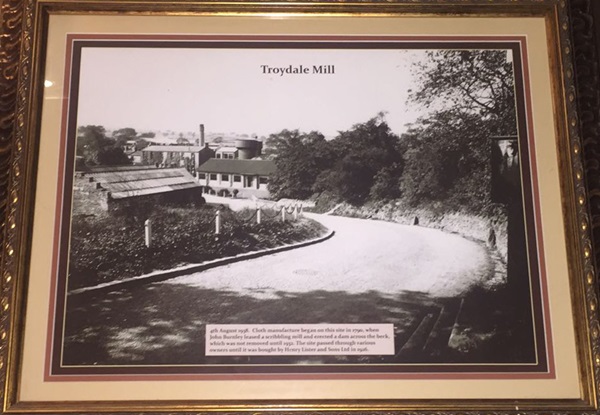
The text reads: 4 August 1938. Cloth manufacture began on this site in 1790, when John Burnley leased a scribbling mill and erected a dam across the beck, which was not removed until 1932. This site passed through various owners until it was bought by Henry Lister and Sons Ltd in 1926.
Prints, photographs and text about Manor House Street.
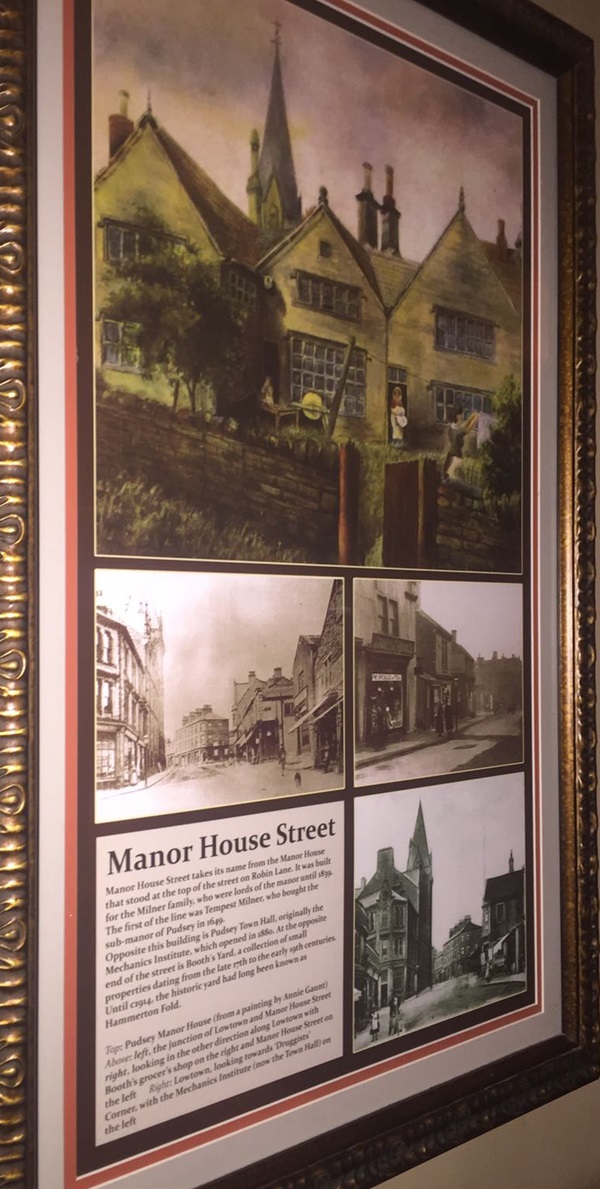
The text reads: Manor House Street takes its name from the Manor House that stood at the top of the street on Robin Lane. It was built for the Milner family, who were lords of the manor until 1839. The first of the line was Tempest Milner, who bought the sub-manor of Pudsey in 1649.
Opposite this building is Pudsey Town Hall, originally the Mechanics Institute, which opened in 1880. At the opposite end of the street is Booth’s Yard, a collection of small properties dating from the late 17th century to the early 19th centuries. Until c1914, the historic yard had long been known as Hammerton Fold.
Top: Pudsey Manor House (from a painting by Annie Gaunt)
Above: left, the junction of Lowtown and Manor House Street , right, looking in the other direction along Lowtown with Booth’s grocery shop on the right and Manor House Street on the left
Right: Lowtown, looking towards Druggists Corner, with the Mechanics Institute (now the Town Hall) on the left.
Photographs and text about Len Hutton.
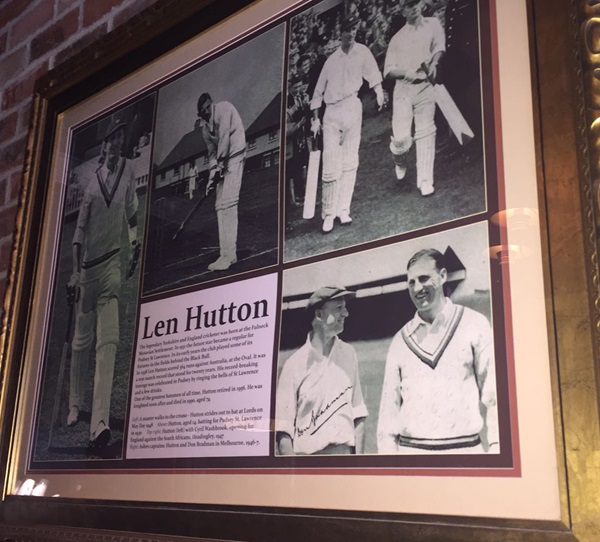
The text reads: The Legendary Yorkshire and England cricketer was born at the Fulneck Moravian Settlement. In 1931 the future star became a regular for Pudsey St Lawrence. In its early years the club played some of its fixtures in the fields behind the Black Bull.
In 1938 Len Hutton scored 364 runs against Australia, at the Oval. It was a test match record that stood for twenty years. His record-breaking innings was celebrated in Pudsey by ringing the bells of St Lawrence and a few drinks.
One of the greatest batsmen of all time, Hutton retired in 1956. He was knighted soon after and died in 1990, aged 74.
Left: A master walks to the crease – Hutton strides out to bat at Lords on May Day 1948
Above: Hutton, aged 14, batting for Pudsey St. Lawrence in 1930
Top right: Hutton with Cyril Washbrook, opening for England against the South Africans, Headingley, 1947
Right: Ashes captains: Hutton and Don Bradman in Melbourne, 1946-7.
A photograph of the Horsefield no.157 tram, at Pudsey terminus, Chapeltown.
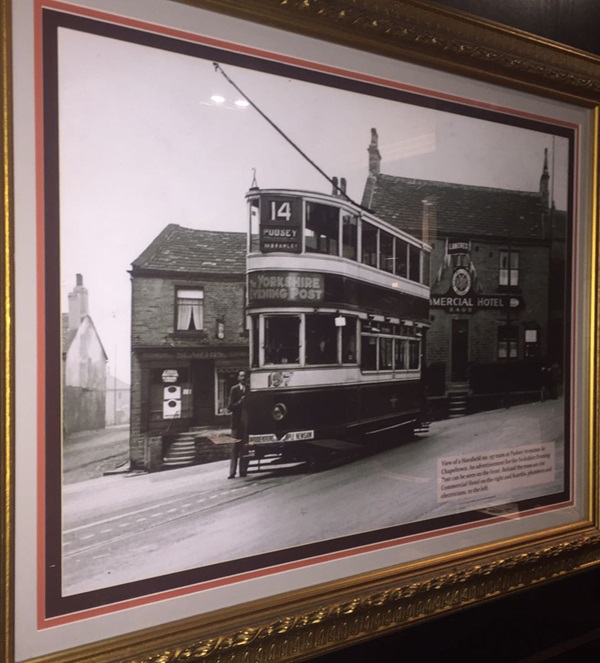
The text reads: An advertisement for the Yorkshire Evening Post can be seen on the front. Behind the tram are the Commercial Hotel on the right and Scarths, plumbers and electricians, to the left.
A photograph showing the optician & chemist’s business belonging to John William Golightly at no.17 Chapeltown.
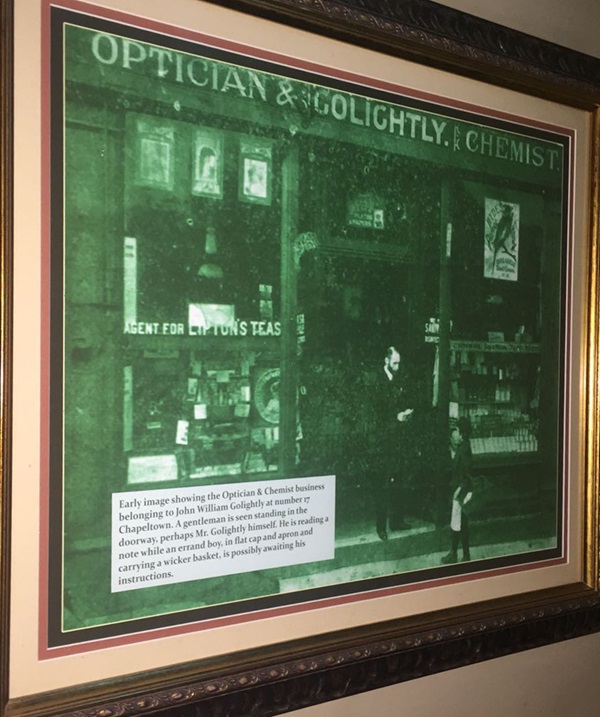
The text reads: A gentleman is seen standing in the doorway, perhaps Mr Golightly himself. He is reading a note while an errand boy, in flat cap and apron and carrying a wicker basket is possibly awaiting his instructions.
A sculpture entitled The Pudsey Weavers, by Shane Green.
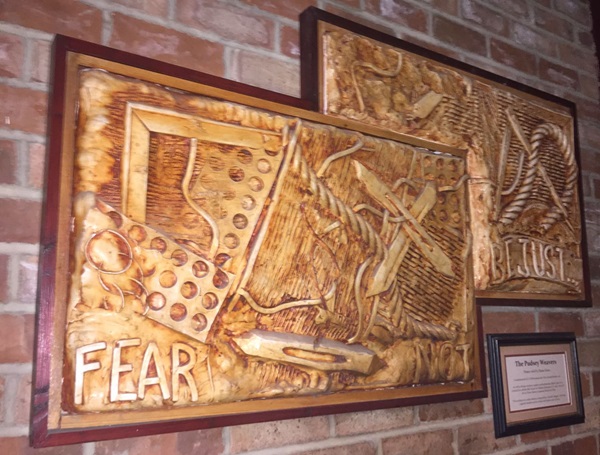
The text reads: As well as being a sculptor, painter and printmaker, Shane Green is a competitive athlete/fell-runner for Pudsey & Bramley AC and a Head of Art at Prince Henrys Grammar School in Otley.
This sculpture is a semi-abstract composition of textile imagery, weaving together shuttles and text from the Pudsey coat of arms.
An acrylic painting entitled Swaledale Sunrise, by Tom Wood.
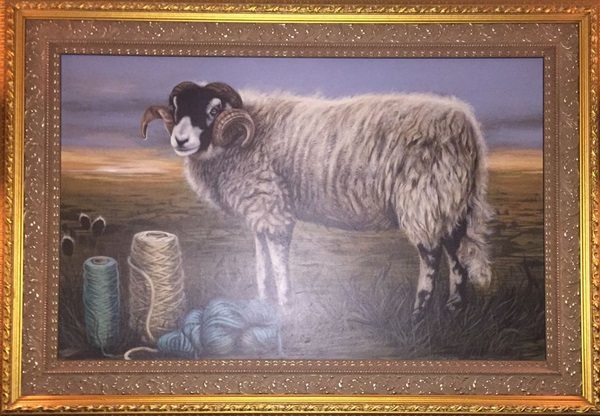
The text reads: Tom Wood is a renowned Yorkshire artist best known for his portraits and still lifes, and more recently his paintings of birds and other animals. This painting was inspired by a visit to the farm of the well-known Swaledale sheep farmer, Roy Nelson.
External photograph of the building – main entrance.
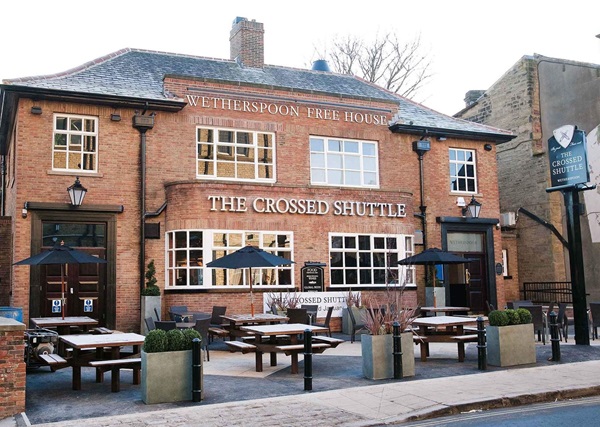
If you have information on the history of this pub, then we’d like you to share it with us. Please e-mail all information to: pubhistories@jdwetherspoon.co.uk